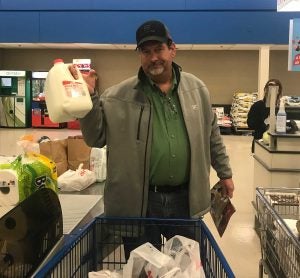When Julie Alexander said “I do” 31 years ago to a dairy farmer, she had no idea the experiences they would have and the memories they would make on their Michigan operation, Na-Lar Farm. Forty years after the dairy farm started, she had no idea the response her thoughts on the family’s exit from the industry would garner on social media.
Alexander posted, to her husband, Jeff’s, initial chagrin, her thoughts as the cattle trucks left their yard one last time and their days as a dairy family ended. She recounted the rewards and challenges of their life on the dairy farm that struck a chord online with those familiar with life on a farm, and those who are not.
“I worked extensively at creating that to make sure my message was what I wanted it to be,” she said. “Something that would offer not only insight but a better understanding for those not involved in agriculture.”
She never imagined the popularity the post would receive and said there are other anecdotes she may have included had she only known. In the post, she details experiences familiar to many farm and ranch families that also shed light on the lifestyle for those not involved in production agriculture. Alexander chronicled the “anticipation of Christmas morning, opening presents could only take place after chores” and the “dreaded knock on the door from a kind neighbor” to let you know the heifers are out when your husband is gone. She also writes of the smells that define home for her, the laundry involved, and the complications of making plans that aren’t derailed by calving cows, milking schedules, sick animals and equipment breakdowns.
The couple made a trip to the grocery store together in the days following the cows’ sale, and she, for the first time in her married life, added milk to her grocery list. She was struck by the moment enough to snap a photo and later included it as a powerful piece of her post.

Though the dairy days have concluded, this is in no way an end to their involvement in production agriculture. Alongside one of their children, their focus is shifting to crop production and Jeff’s Dairyland Seed business.
Alexander continues to serve her state’s agriculture industry from the capitol. She is a first-term legislator in Michigan and serves as the vice-chair of Agriculture in the House of Representatives. Her state is extremely diversified, producing 300 agricultural commodities. Her voice has been a strong and steady one in educating others about the challenges that face dairy farmers.
She spent much of the fall contacting national elected officials describing the challenges the industry faces with the USDA Grade A milk inspections. These inspections, she said, unfairly deduct points from robotic milking systems in what she calls an unfair and unrealistic manner that resulted in producers losing their ability to ship milk. The USDA took notice of the efforts of Alexander and those she worked closely with and are reviewing policy.
She and her husband have also thrown open the gates to their farm to educate lawmakers, guests, and even schoolchildren about the farm, giving them an up-close look at operations.
“The other fine balance for me was making sure that the comments I put out there in regard to modifications and legislation, the safety net that’s not there for us anymore, had the right tone,” she said. “I didn’t want it to look like farmers are just looking for the government to help us.”
In her post, Alexander called farmers “professional gamblers” who attempt to manage around variables including commodity prices, consumption and demand, and regulations. She also points out the impact the closures of small operations will ultimately have on the state’s $15 billion industry.
“While 97% of Michigan’s farms are still family owned and operated, you will find farms getting larger with small operations leaving due to the current depressed dairy market,” she wrote. The Na-Lar herd, when established in 1977, was one of 120 dairy farms in the county. The county now has only about a dozen, she said, even though a modern farmer feeds 155 people compared to 1960’s estimate of 26 people.
“I believe the Lord has a plan,” she said. “We don’t have to know what it is, we just have to have faith. We are so blessed in so many ways.”



